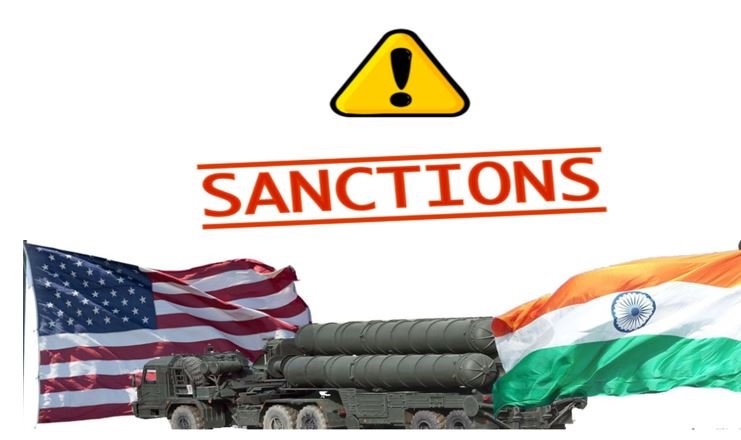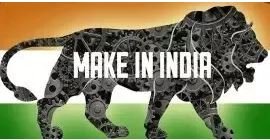Can Biden Administration Afford To Lose QUAD Ally over CAATSA?


Russia’s special operations in Ukraine have entered the 4th week as it was started on February 24th, 2022. With each passing day, the West is imposing more harsh sanctions on Russia.
It’s not the first time Russia has faced such hostility from the West. Similar sanctions were also imposed when Russia had made the Crimean Peninsula its territory in February-March 2014.
One of the most significant sanctions was aimed at preventing the sale of Russian arms and ammunition to third-party countries, with the threat of sanctions on the buyer country.
Before we move ahead of the sanction threats, let us walk through that why India has so much arms dependency on foreign supplies.

Regardless of the state of India–US, and India–Russia ties, there remains an inescapable challenge that India has struggled to achieve since its independence.
Since 1947, the Congress government have never taken condensation of India’s Armed Defense Forces requirement who have to defend India’s large both land and sea borders.
The non-Aligned subtle card started by Nehru and followed by the Nehru-Gandhi family, who ruled the country for more than 5 decades made New Delhi’s incapable to indigenize the development of military products. This inability optimally serves the needs of the Indian military which makes the challenge that the country is facing more pronounced.
The absence of a Military-Industrial Complex (MIC) as is prevalent in the US, Russia, and even China, the current denouement India confronts in meeting the capability requirements of all the service branches of the Indian military will continue.
Russia’s military operations in Ukraine may complicate India-Russia military dealing in the future. The picture gets more grimed with India abstaining on several symbolic United Nations votes.
US think tanks had been very vocal lately that The Biden Administration needs to consider the geopolitical situation again before deciding CAATSA sanctions on India”.
“India is a really important security partner of ours now. And we value moving forward that partnership and I hope that part of what happens with the extreme criticism that Russia has faced is that India will find it’s now time to further distances,” said Donald Lu, Assistant Secretary of State for South and Central Asia, according to a PTI report[1].
Lu said that the Biden administration is yet to decide on applying sanctions on India under CAATSA.
“What we’ve seen from India in just the last few weeks, is the cancellation of MiG 29 orders, Russian helicopter orders, and anti-tank weapon orders”, Lu added.

However, “Washington air is signaling that the Biden administration is contemplating imposing CAATSA sanctions against India, the largest democracy on Earth, a decision that I think would be extraordinarily foolhardy”, Senator Ted Cruz said during a hearing on pending nominations by the powerful Senate Foreign Relations Committee[2].
Cruz, who represents the State of Texas in the United States Senate, has said that the bilateral relationship between India and the United States has deteriorated under the Biden Administration.
“India is a critical ally across a number of areas, and the US-India alliance has broadened and deepened in recent years. But under the Biden administration, it’s gone backward”, Cruz added.
India is not the only country to have voted against us, and against condemning Russia, Ted Cruz mentioned observing India’s abstention in the United Nations General Assembly vote condemning Putin’s aggression.
Indeed, there is much more evidence that there is sufficient flexibility in the US Senate with Senators John Cornyn of Texas and Mark Warner of Virginia urging President Biden to grant a waiver.
The US State Department also stated “The United States is continuing to talk to India about the risks of sanctions for its acquisition of the S-400 missile system from Russia under the Countering America’s Adversaries through Sanctions Act (CAATSA), but hasn’t made a determination “with regard to this transaction”.
Speaking at a regular press briefing, the state department spokesperson Ned Price was asked whether, given US’s renewed tensions with Russia, India’s purchase of the missile system will affect the India-US bilateral relationship.

Price said, “In many ways, this doesn’t change the concerns that we have with the S-400 system. I think it shines a spotlight on the destabilizing role that Russia is playing not only in the region but potentially beyond as well. When it comes to CAATSA sanctions, you’ve heard me say before we haven’t made a determination with regard to this transaction, but it’s something we continue to discuss with the Government of India, given the risk of sanctions for this particular transaction under CAATSA[3].”
Price added that whether it was India or any other country, the US continued to “urge all countries to avoid major new transactions for Russian weapon systems”.
Notwithstanding the current optimism about the prospect of a waiver, there are much deeper problems that are likely to impact ties between Washington and New Delhi due to India’s dependence on Russian military hardware.
However, moving forward, there will be limits to how much India can ward off pressure from the US over India’s future arms purchases from Russia.
These limits include efforts to lobby the US Congress through various support and interest groups within the US seeking to advance the mutual interests of the US and India and preserve comity in the bilateral relationship between the two countries.
If US–India interests do not align sufficiently that are not germane per se to the bilateral relationship as is the case today over the S-400 SAMs due to current tensions between Russia and the US over Ukraine, there is potential for a fraught relationship with Washington.
The Americans, to be sure, would have preferred that India purchase either the Patriot Battery system built by the American defense major Raytheon or the Theater High Altitude Area Defense (THAAD) system built by Lockheed Martin[4].
For the cost, operational requirements, and other reasons, India demurred in purchasing the American SAMs.
These problematic issues afflicting India’s defense needs have very little to do with either Moscow or Washington, they are to do with the country’s still limited domestic defense industrial base.
Although there is some disappointment in Washington with India’s continued defense relationship with Russia, there is also some empathy and support for India because augmenting India’s national military capabilities is seen as a general good that is also beneficial to the U.S.
If the Biden Administration is to impose sanctions on India, it would likely only weaken an important American partner, which is not something the U.S. would want to do.
It may also dent the credibility of both the Middle East and Asia Pacific Quad which India and the USA are prominent members.

Moreover, how can Biden Administration forget the “Soft Power” India America holds in the United States?
As per one estimate, nearly 40 million American follow Hindu traditions of meditation and yoga.
Though India-American constitutes just 4 million out of 330 million of the total US Population however reports say that Indian Americans are the richest minority in the US.
Indians in the US, have an average household earning of USD 123,700 and 79 percent are college graduates. Indians have surpassed the overall American population in terms of wealth and college education, according to a media report which cited the latest census data. Indian salary is nearly double the nationwide average of USD 63,922. Indians’ college graduates are 79 percent in comparison with the nationwide average of 34 percent, according to the report[5].
As per Pew Research report, “Between 2010 and 2050, the most rapid Hindu population growth, in percentage terms, is projected to occur in North America (160%), more than six times the expected increase in the region’s overall population (26%). This makes Hinduism the fastest-spreading religion in the USA.
Thus, it’s apparent that the USA will not jeopardize the condition both at home and abroad by putting sanctions against India.
Nevertheless, backing off from the S-400s will present domestic political difficulties for the Modi government at this stage. These competing imperatives suggest on both sides that Washington and New Delhi will do their best to find a compromise solution that will allow President Biden to avoid imposing CAATSA sanctions on India.

For the Indian establishment too, it has been a hard decision. New Delhi does not want to give up on the Russian relationship despite Moscow’s dalliance with China but it also does not want to push the U.S. too hard.
The S-400 deal is only symptomatic of a larger, yet perpetual malaise. Even if India substituted the S-400s for the Patriot or THAAD systems, New Delhi would have replaced one external supplier with another creating another dependency.
On the other hand, India may have to compensate the US for its refusal to buy the Lockheed or Raytheon-built SAMs by purchasing some weapons system or platform from the US entrapping India in a vicious cycle of interminable addiction to foreign military supplies.
Conversely, sourcing capabilities from the US are not without their negative consequences for India–Russia defense relations either. Unless India is able to limit this foreign dependence on crucial weapons systems more generally, the frequency of tensions with one or two weapons suppliers, which also happen to be major powers will persist. Indigenization of defense hardware significantly limits extraneous pressures and in all likelihood in some cases even renders them irrelevant.
On the other hand, absent strong indigenization India will remain susceptible to geopolitical pressures from supplier states and will fall prey, sometimes, to the strategic tensions between them.
Modi Administration has taken the ventures to a high level which were once initiated by Narasimha Rao and Vajpayee Government by launching the “Made in India” Program with a special focus on “Defense and Space research”.
Admittedly, in the area of missile development, India has had success in air-to-air missiles such as the Astra, Pinaka Multi-Barrel Rocket Launch Systems (MRBLs) including its enhanced variants.
A range of ballistic missiles ranging from the Prithvi Short Range Ballistic Missiles (SRBMs) to the AGNI series of Intermediate-Range Ballistic Missile (IRBMs), the K-4 Submarine Launched Ballistic Missile (SLBM), the latest Pralay SRBM and geared for conventional missions, and the Supersonic Missile Assisted Torpedo (SMART).
In addition, the Indian armed services also field all variants of the BrahMos cruise missiles, albeit a Joint Venture (JV) between India and Russia, reflecting again the level of dependence India still has on Russia.
However, in the air defense domain India’s Defense Research and Develop Organization (DRDO) is yet to develop a single credible SAM capability comparable to the S-400.
In the Indian Air Force (IAF) inventory, there are short-range SAMs such as the Akash, Nag, and a vertical launch short-range SAM for integration onboard the Indian Navy (IN) surface vessels, which notwithstanding the DRDO’s claims may still be subject to additional testing before deployment in not just countering China and Pakistan, but equally one that weans India’s reliance on oversees suppliers such as Russia, US, France, and other western partners.
India has to be self-reliant although US and Russia are sovereign states, it should also be kept in mind that their quiescence cannot be taken for granted beyond a point, especially when India faces real military threats from arch-rivals China and Pakistan.
The sooner India becomes self-reliant the better it will be not only for regional stability but also for the World’s stability.
[1] Biden will decide on sanctions on India: US official on Russian S-400 deal | Business Standard News (business-standard.com)
[2] CAATSA sanctions on India would be ‘extraordinarily rash’: Senator Cruz | Business Standard News (business-standard.com)
[3] ‘Destabilising role’: Concerned about Russia’s S-400 missile defence system sale to India: US, World News | wionews.com
[4] CAATSA, Russia’s S-400s, and the challenge for India’s defence indigenisation | ORF (orfonline.org)
[5] Indians in US wealthier with average household earning of $123,700: Report | Business Standard News (business-standard.com)
DISCLAIMER: The author is solely responsible for the views expressed in this article. The author carries the responsibility for citing and/or licensing of images utilized within the text.
